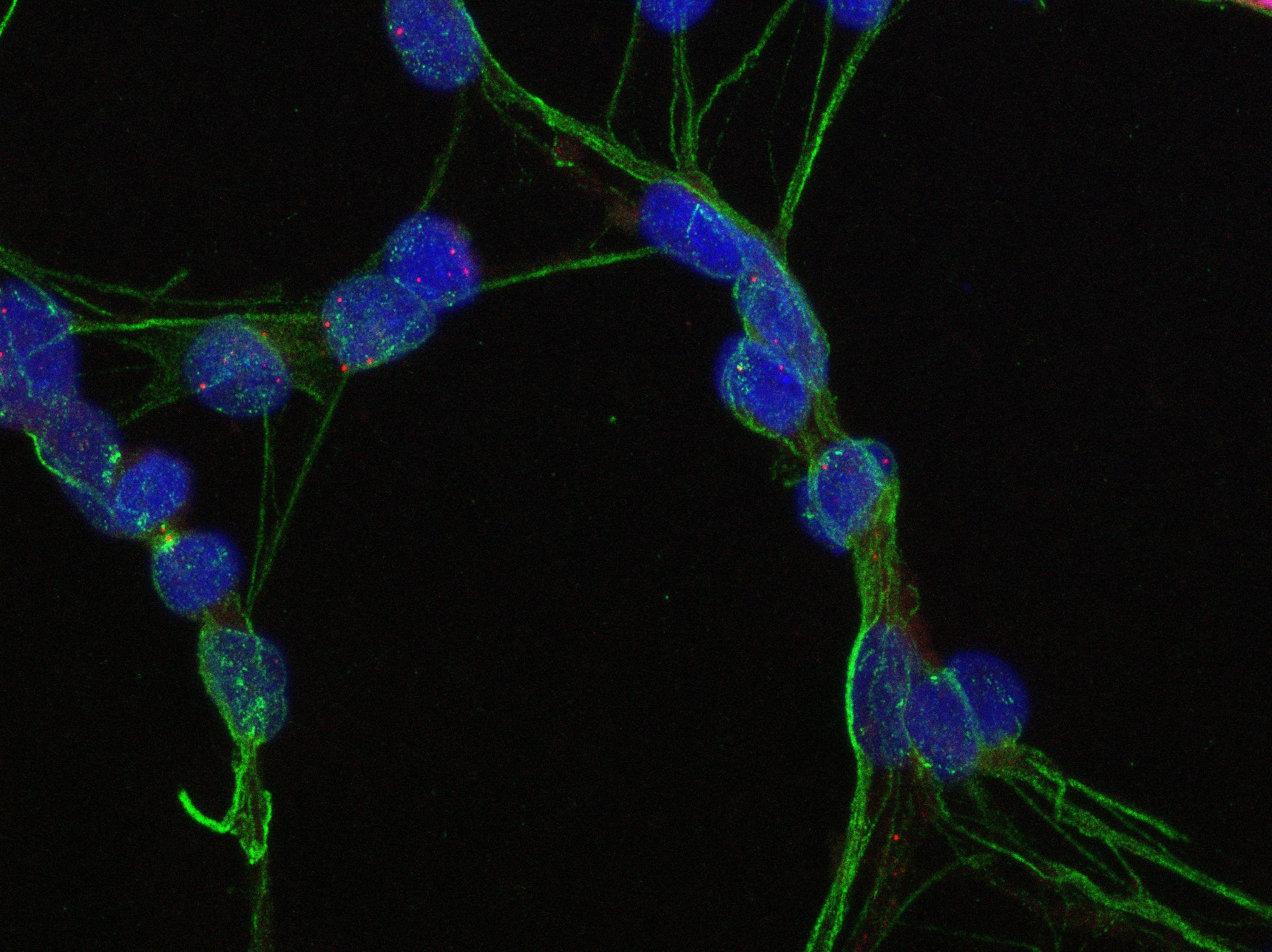Stem cells are cells that have not yet become specialised to perform a particular function. They can renew themselves and have the potential to give rise to many different cell types, including neurones and nervous system support cells.
The main types of stem cells are embryonic, induced pluripotent stem cells (iPSCs), umbilical cord and adult stem cells. Their uses in medicine include research to understand underlying causes of a disease, such as MND, and the development of new therapies.

